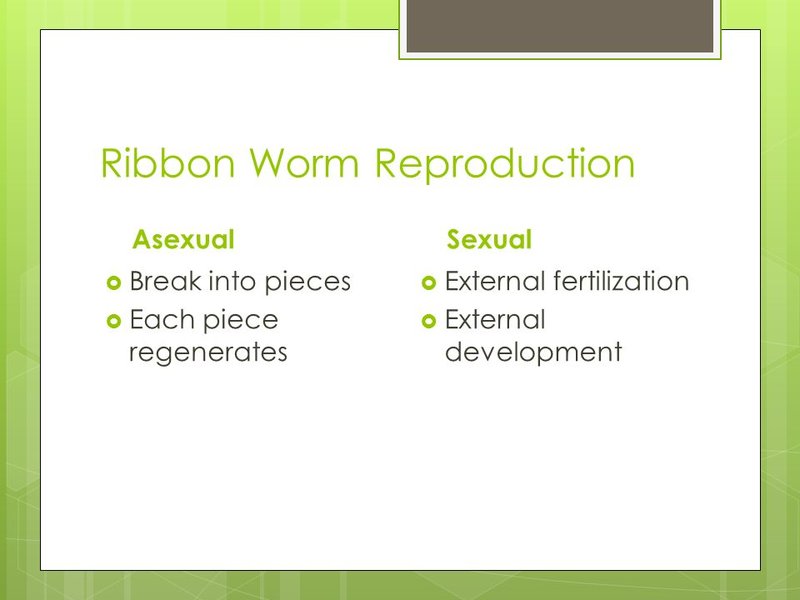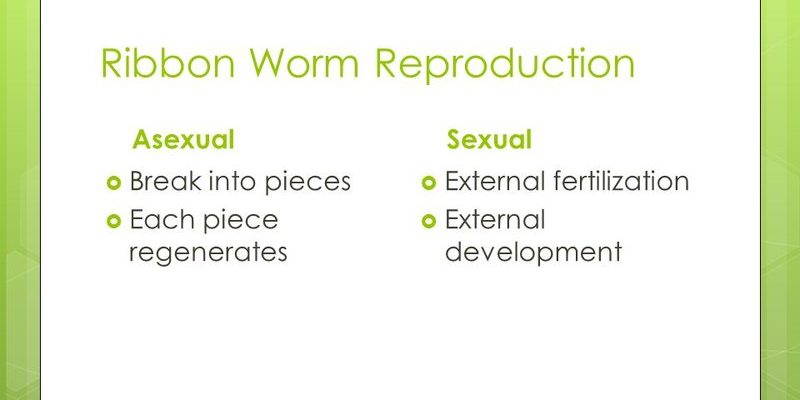
You might be wondering why understanding ribbon worm reproduction is important. Well, it sheds light on their biology and helps scientists figure out how to protect them and their habitats. Plus, it’s just cool to know how these slippery slimers bring new life into the world. So, let’s dive in and explore the ins and outs of ribbon worm reproduction!
What Are Ribbon Worms?
Before we get into their reproduction strategies, let’s take a quick look at what ribbon worms are. They belong to the phylum Nemertea and are known for their elongated, ribbon-like bodies. These creatures can vary in size and color, often showcasing brilliant hues that camouflage them perfectly in their environments. Ribbon worms primarily live in marine and freshwater habitats, where they hunt small prey like worms, crustaceans, and even fish.
These worms are fascinating not just because of their appearance but also due to their remarkable physiology. They possess a unique feeding structure called a proboscis, which they can extend rapidly to capture prey. Think of it like a highly specialized fishing line! Their ability to thrive in a variety of environments makes them a subject of interest for biologists and ecologists alike.
Understanding Sexual Reproduction in Ribbon Worms
When it comes to sexual reproduction, ribbon worms have a few tricks up their sleeves. Most ribbon worms are dioecious, meaning they have distinct male and female individuals. During the mating season, sex-specific signals trigger them to come together, often leading to spectacular mating displays in the water.
The process usually starts when males and females encounter each other. Males will often release sperm into the water, which females then take in. The fertilization of eggs occurs externally, usually in the ocean. You can think of it as an underwater dance, where the males and females release their genetic material into the surrounding water, hoping for successful fertilization.
Once fertilization occurs, the female lays eggs that develop into larvae, which eventually settle to become mature worms. This method allows for genetic diversity, which can be crucial for the survival of species, especially in changing environments.
Asexual Reproduction: A Quick And Clever Strategy
Now, let’s switch gears and talk about asexual reproduction. It’s like an efficient shortcut in the ribbon worm world. Instead of relying on finding a partner, some ribbon worms can reproduce by fission. This means they can split themselves in half and regenerate the missing parts. Imagine cutting a long rubber band—you end up with two smaller ones, and both can grow back into full-sized worms.
This method of reproduction is particularly beneficial in stable environments where conditions are not changing much. It allows ribbon worms to reproduce quickly without needing to wait for a mate. Each piece can grow independently into a new organism, ensuring that the worm population can increase rapidly if conditions are right.
However, while asexual reproduction is efficient, it doesn’t provide the same genetic diversity that sexual reproduction does. So, ribbon worms have the best of both worlds by being able to switch between these two reproduction methods depending on their environment.
The Role of Environmental Factors in Reproductive Strategies
Environmental factors play a significant role in how ribbon worms choose to reproduce. In stable habitats where resources are plentiful, you might see higher rates of asexual reproduction. After all, it’s easier to split and grow rather than search for a partner. On the flip side, when conditions become tricky, like in a polluted or changing habitat, they might switch to sexual reproduction.
Temperature, salinity, and food availability can all impact their reproductive choices. For example, if water temperatures rise or fall, it can trigger hormonal changes in ribbon worms that dictate whether they reproduce sexually or asexually. This adaptability makes ribbon worms highly resilient, allowing them to cope with environmental changes and challenges.
Insights Into Ribbon Worm Larval Development
Once ribbon worm eggs are fertilized, the next phase is larval development. The larvae typically develop in the water column before settling down on the ocean floor or riverbeds. This part of their life cycle is crucial because it determines how well they will grow into adult worms.
The larvae of ribbon worms undergo several transformations as they develop. It’s similar to metamorphosis in butterflies, where the changes are significant. They might have different feeding strategies and habitats during this larval stage compared to their adult selves.
After settling, these tiny larvae will eventually grow into full-sized ribbon worms. This journey from a small larva to a mature worm is not just about growing bigger; it’s about adapting to their surroundings and ensuring they can thrive.
Why Understanding Ribbon Worm Reproduction Matters
So, why should we care about how ribbon worms reproduce? For starters, understanding their reproductive strategies helps scientists assess the health of marine ecosystems. Ribbon worms serve as important indicators of environmental health, and their populations can reveal much about changes in their habitats.
Plus, this knowledge can have wider implications for conservation efforts. As we face challenges like climate change and habitat destruction, knowing how species like ribbon worms adapt and reproduce ensures that we can protect not only them but also the ecosystems they inhabit.
In a broader sense, studying ribbon worm reproduction helps us appreciate the incredible diversity of life on Earth. It’s a reminder that nature has many clever solutions to the challenges of survival.
Ribbon worms are truly remarkable creatures, displaying both sexual and asexual reproduction strategies that allow them to thrive in various environments. Their adaptability is a testament to the clever ways nature has evolved to ensure survival and biodiversity.
By understanding how these fascinating animals reproduce, we not only gain insight into their biology but also the health of the ecosystems they inhabit. Whether they’re dancing in the water during mating or splitting to create new life, ribbon worms remind us of the beauty and complexity of life beneath the surface. So, the next time you see a ribbon worm, remember—there’s a lot more going on beneath all that squiggly surface!

